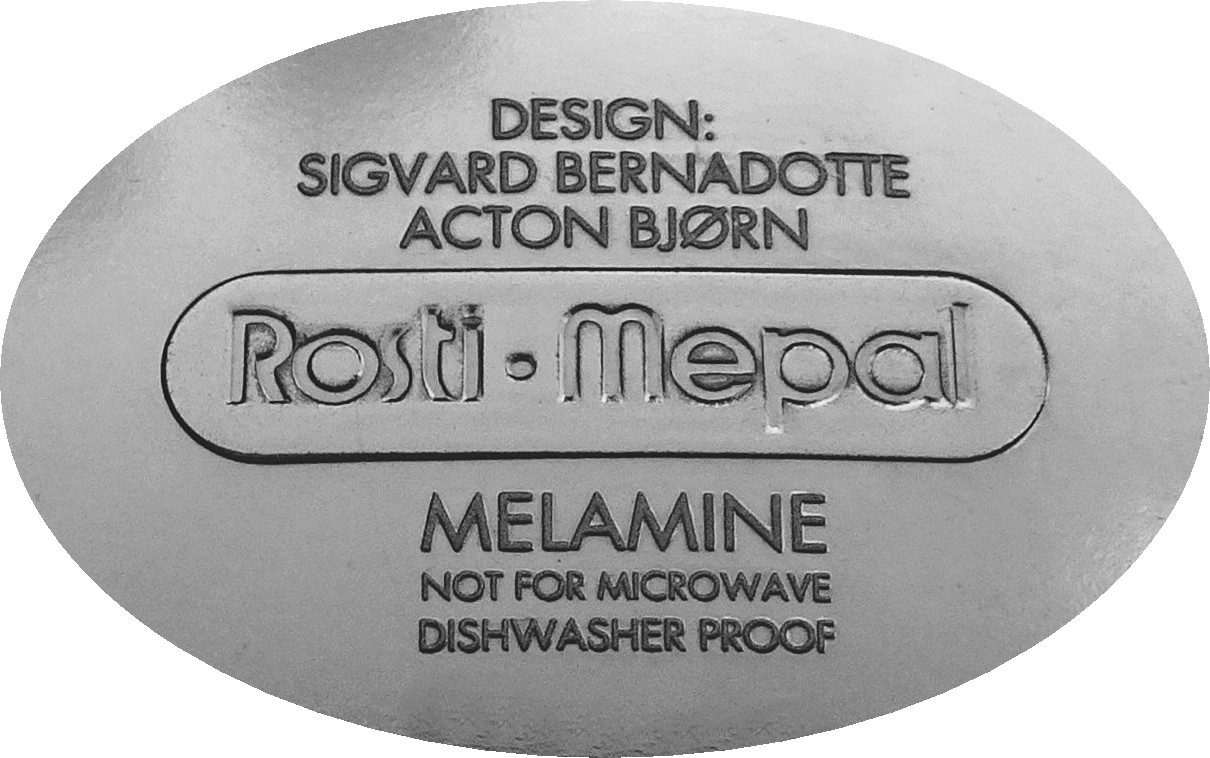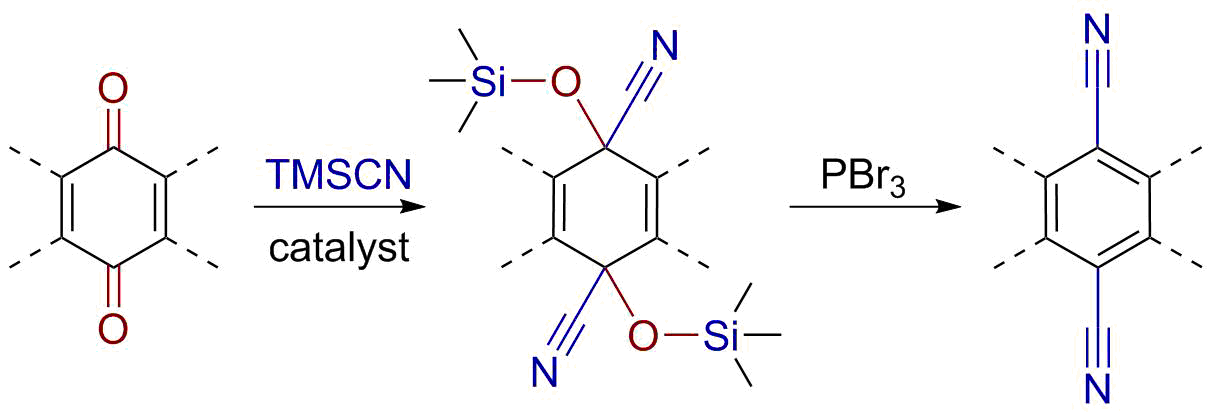|
Guanamine
In organic chemistry, a guanamine is an organic compound with the formula (H2NC)2N3CR. They are heterocycles of the triazine class. Guanamines are closely related to melamine ((H2NC)3N3), except with one amino substituent replaced by an organic group. With two amines, guanamines are bifunctional, whereas melamine is trifunctional. This difference is exploited in the use of guanamines to modify the crosslink density in melamine resins. They are white or colorless solids of low toxicity. Some popular guanamines are the phenyl, methyl and nonyl derivatives, called benzoguanamine, acetoguanamine, and capriguanamine. They are all prepared by the condensation of cyanoguanidine with the corresponding nitrile In organic chemistry, a nitrile is any organic compound that has a functional group. The prefix ''cyano-'' is used interchangeably with the term ''nitrile'' in industrial literature. Nitriles are found in many useful compounds, including met ...: :(H2N)2C=NCN + ... [...More Info...] [...Related Items...] OR: [Wikipedia] [Google] [Baidu] |
Triazine
Triazines are a class of nitrogen-containing heterocycles. The parent molecules' molecular formula is . They exist in three isomeric forms, 1,3,5-triazines being common. Structure The triazines have planar six-membered benzene-like ring but with three carbons replaced by nitrogens. The three isomers of triazine are distinguished by the positions of their nitrogen atoms, and are referred to as 1,2,3-triazine, 1,2,4-triazine, and 1,3,5-triazine. Other aromatic nitrogen heterocycles are pyridines with one ring nitrogen atom, diazines with 2 nitrogen atoms in the ring, triazoles with 3 nitrogens in a 5 membered ring, and tetrazines with 4 ring nitrogen atoms. Uses Melamine A well known triazine is melamine (2,4,6-triamino-1,3,5-triazine). With three amino substituents, melamine is a precursor to commercial resins. Guanamines are closely related to melamine, except with one amino substituent replaced by an organic group. This difference is exploited in the use of guanamines ... [...More Info...] [...Related Items...] OR: [Wikipedia] [Google] [Baidu] |
Triazines
Triazines are a class of nitrogen-containing heterocycles. The parent molecules' molecular formula is . They exist in three isomeric forms, 1,3,5-triazines being common. Structure The triazines have planar six-membered benzene-like ring but with three carbons replaced by nitrogens. The three isomers of triazine are distinguished by the positions of their nitrogen atoms, and are referred to as 1,2,3-triazine, 1,2,4-triazine, and 1,3,5-triazine. Other aromatic nitrogen heterocycles are pyridines with one ring nitrogen atom, diazines with 2 nitrogen atoms in the ring, triazoles with 3 nitrogens in a 5 membered ring, and tetrazines with 4 ring nitrogen atoms. Uses Melamine A well known triazine is melamine (2,4,6-triamino-1,3,5-triazine). With three amino substituents, melamine is a precursor to commercial resins. Guanamines are closely related to melamine, except with one amino substituent replaced by an organic group. This difference is exploited in the use of gua ... [...More Info...] [...Related Items...] OR: [Wikipedia] [Google] [Baidu] |
Organic Chemistry
Organic chemistry is a subdiscipline within chemistry involving the science, scientific study of the structure, properties, and reactions of organic compounds and organic materials, i.e., matter in its various forms that contain carbon atoms.Clayden, J.; Greeves, N. and Warren, S. (2012) ''Organic Chemistry''. Oxford University Press. pp. 1–15. . Study of structure determines their structural formula. Study of properties includes Physical property, physical and Chemical property, chemical properties, and evaluation of Reactivity (chemistry), chemical reactivity to understand their behavior. The study of organic reactions includes the organic synthesis, chemical synthesis of natural products, drugs, and polymers, and study of individual organic molecules in the laboratory and via theoretical (in silico) study. The range of chemicals studied in organic chemistry includes hydrocarbons (compounds containing only carbon and hydrogen) as well as compounds based on carbon, but also con ... [...More Info...] [...Related Items...] OR: [Wikipedia] [Google] [Baidu] |
Organic Compound
In chemistry, organic compounds are generally any chemical compounds that contain carbon- hydrogen or carbon-carbon bonds. Due to carbon's ability to catenate (form chains with other carbon atoms), millions of organic compounds are known. The study of the properties, reactions, and syntheses of organic compounds comprise the discipline known as organic chemistry. For historical reasons, a few classes of carbon-containing compounds (e.g., carbonate salts and cyanide salts), along with a few other exceptions (e.g., carbon dioxide, hydrogen cyanide), are not classified as organic compounds and are considered inorganic. Other than those just named, little consensus exists among chemists on precisely which carbon-containing compounds are excluded, making any rigorous definition of an organic compound elusive. Although organic compounds make up only a small percentage of Earth's crust, they are of central importance because all known life is based on organic compounds. Livin ... [...More Info...] [...Related Items...] OR: [Wikipedia] [Google] [Baidu] |
Heterocycle
A heterocyclic compound or ring structure is a cyclic compound that has atoms of at least two different elements as members of its ring(s). Heterocyclic chemistry is the branch of organic chemistry dealing with the synthesis, properties, and applications of these heterocycles. Examples of heterocyclic compounds include all of the nucleic acids, the majority of drugs, most biomass (cellulose and related materials), and many natural and synthetic dyes. More than half of known compounds are heterocycles. 59% of US FDA-approved drugs contain nitrogen heterocycles. Classification The study of heterocyclic chemistry focuses especially on unsaturated derivatives, and the preponderance of work and applications involves unstrained 5- and 6-membered rings. Included are pyridine, thiophene, pyrrole, and furan. Another large class of heterocycles refers to those fused to benzene rings. For example, the fused benzene derivatives of pyridine, thiophene, pyrrole, and furan are quinol ... [...More Info...] [...Related Items...] OR: [Wikipedia] [Google] [Baidu] |
Melamine
Melamine is an organic compound with the formula C3H6N6. This white solid is a trimer of cyanamide, with a 1,3,5-triazine skeleton. Like cyanamide, it contains 67% nitrogen by mass, and its derivatives have fire retardant properties due to its release of nitrogen gas when burned or charred. Melamine can be combined with formaldehyde and other agents to produce melamine resins. Such resins are characteristically durable thermosetting plastic used in high pressure decorative laminates such as Formica, melamine dinnerware, laminate flooring, and dry erase boards. Melamine foam is used as insulation, soundproofing material and in polymeric cleaning products, such as Magic Eraser. Melamine was once illegally added to baby formula in China, in order to increase the apparent protein content. Ingestion of melamine may lead to reproductive damage, or bladder or kidney stones, and bladder cancer. It is also an irritant when inhaled or in contact with the skin or eyes. The Uni ... [...More Info...] [...Related Items...] OR: [Wikipedia] [Google] [Baidu] |
Melamine Resin
Melamine resin or melamine formaldehyde (also shortened to melamine) is a resin with melamine rings terminated with multiple hydroxyl groups derived from formaldehyde. This thermosetting plastic material is made from melamine and formaldehyde. In its butylated form, it is dissolved in ''n''-butanol and xylene. It is then used to cross-link with alkyd, epoxy, acrylic, and polyester resins, used in surface coatings. There are many types, varying from very slow to very fast curing. Curing Melamine-formaldehyde can be cured by heating, which induces dehydration and crosslinking. The crosslinking can be carried out to a limited degree to give resins. Either the melamine-formaldehyde resins or melamine-formaldehyde "monomer" can be cured by treatment with any of several polyols. Applications Construction material The principal use of melamine resin is as the main constituent of high-pressure laminates, such as Formica and Arborite, and of laminate flooring. Melam ... [...More Info...] [...Related Items...] OR: [Wikipedia] [Google] [Baidu] |
Benzoguanamine
Benzoguanamine is an organic compound with the chemical formula (CNH2)2(CC6H5)N3. It is related to melamine but with one amino group replaced by phenyl. Benzoguanamine is used in the manufacturing of melamine resins. Unlike melamine ((CNH2)3N3), benzoguanamine is not a crosslinker. The "benzo" prefix is historical, as the compound contains phenyl, not a benzo group. A related compound is acetoguanamine. The compound is prepared by condensation of cyanoguanidine with benzonitrile. Safety LD50 In toxicology, the median lethal dose, LD50 (abbreviation for "lethal dose, 50%"), LC50 (lethal concentration, 50%) or LCt50 is a toxic unit that measures the lethal dose of a toxin, radiation, or pathogen. The value of LD50 for a substance is the ... (oral, rats) is 1470 mg/kg. References Triazines {{heterocyclic-stub ... [...More Info...] [...Related Items...] OR: [Wikipedia] [Google] [Baidu] |
Acetoguanamine
Acetoguanamine is an organic compound with the chemical formula (CNH2)2CCH3N3. It is related to melamine but with one amino group replaced by methyl. Acetoguanamine is used in the manufacturing of melamine resins. Unlike melamine ((CNH2)3N3), acetoguanamine is not a crosslinker. The "aceto" prefix is historical, the compound does not contain an acetyl group. A related compound is benzoguanamine. The compound is prepared by condensation of cyanoguanidine with acetonitrile: :(H2N)2C=NCN + MeCN → (CNH2)2(CMe)N3 Safety LD50 In toxicology, the median lethal dose, LD50 (abbreviation for "lethal dose, 50%"), LC50 (lethal concentration, 50%) or LCt50 is a toxic unit that measures the lethal dose of a toxin, radiation, or pathogen. The value of LD50 for a substance is the ... (oral, rats) is 2740 mg/kg. References Triazines {{heterocyclic-stub ... [...More Info...] [...Related Items...] OR: [Wikipedia] [Google] [Baidu] |
Cyanoguanidine
2-Cyanoguanidine is a nitrile derived from guanidine. It is a dimer of cyanamide, from which it can be prepared. 2-Cyanoguanidine is a colourless solid that is soluble in water, acetone, and alcohol, but not nonpolar organic solvents. Production and use 2-Cyanoguanidine is produced by treating cyanamide with base. It is produced in soil by decomposition of cyanamide. A variety of useful compounds are produced from 2-cyanoguanidine, guanidines and melamine. For example, acetoguanamine and benzoguanamine are prepared by condensation of cyanoguanidine with the nitrile: :(H2N)2C=NCN + RCN → (CNH2)2(CR)N3 Cyanoguanidine is also used as a slow fertilizer. Formerly, it was used as a fuel in some explosives. It is used in the adhesive industry as a curing agent for epoxy resins. Chemistry Two tautomeric forms exist, differing in the protonation and bonding of the nitrogen to which the nitrile group is attached. : 2-Cyanoguanidine can also exist in a zwitterionic form via a for ... [...More Info...] [...Related Items...] OR: [Wikipedia] [Google] [Baidu] |
Nitrile
In organic chemistry, a nitrile is any organic compound that has a functional group. The prefix '' cyano-'' is used interchangeably with the term ''nitrile'' in industrial literature. Nitriles are found in many useful compounds, including methyl cyanoacrylate, used in super glue, and nitrile rubber, a nitrile-containing polymer used in latex-free laboratory and medical gloves. Nitrile rubber is also widely used as automotive and other seals since it is resistant to fuels and oils. Organic compounds containing multiple nitrile groups are known as cyanocarbons. Inorganic compounds containing the group are not called nitriles, but cyanides instead. Though both nitriles and cyanides can be derived from cyanide salts, most nitriles are not nearly as toxic. Structure and basic properties The N−C−C geometry is linear in nitriles, reflecting the sp hybridization of the triply bonded carbon. The C−N distance is short at 1.16 Å, consistent with a triple bond. Nitril ... [...More Info...] [...Related Items...] OR: [Wikipedia] [Google] [Baidu] |




